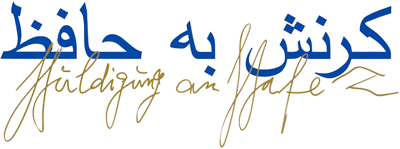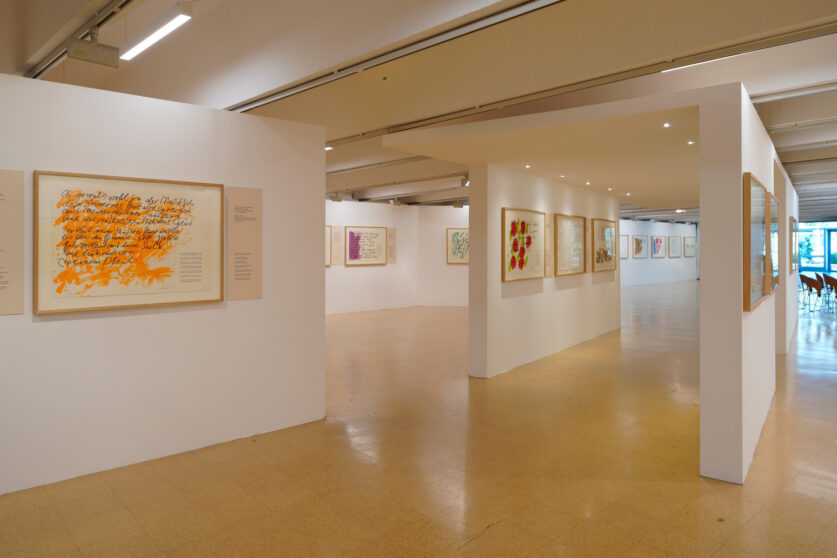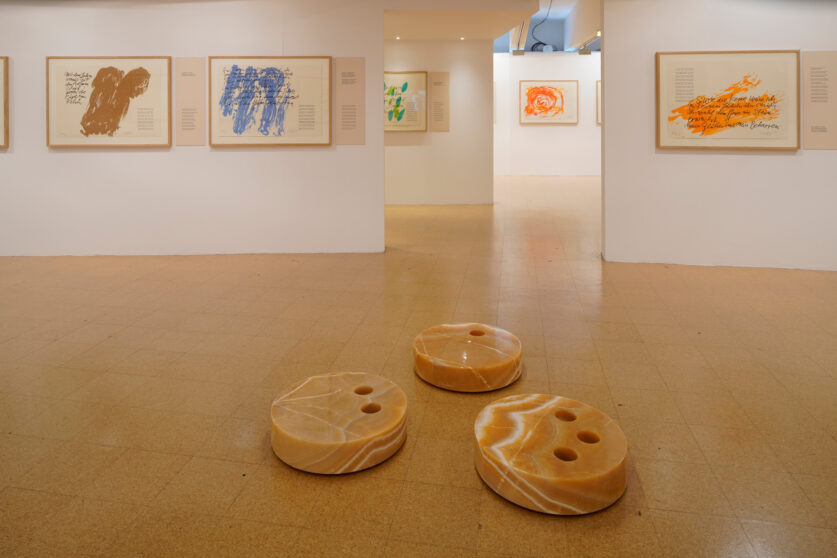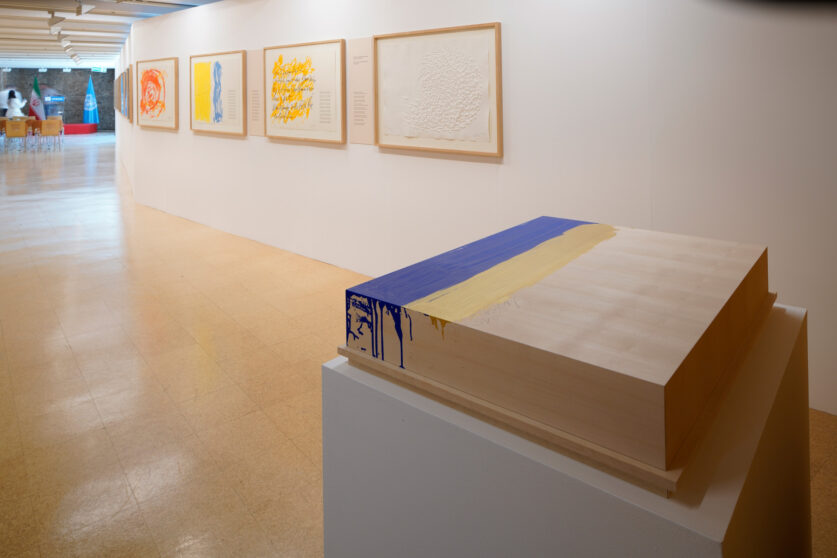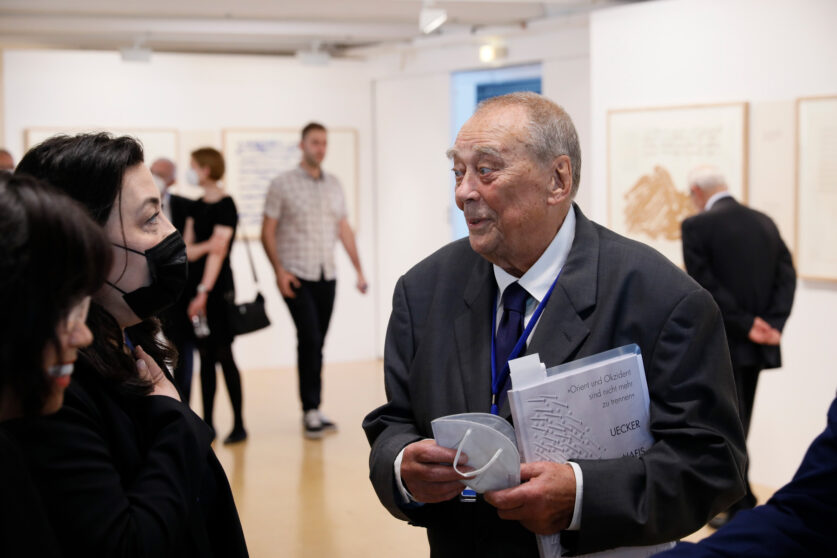PARIS
Paris. Günther Uecker presents his Hafis cycle at UNESCO in Paris. More than just an exhibition, it is a gathering with diplomats from around the world for the opening. By Annette Bosetti.
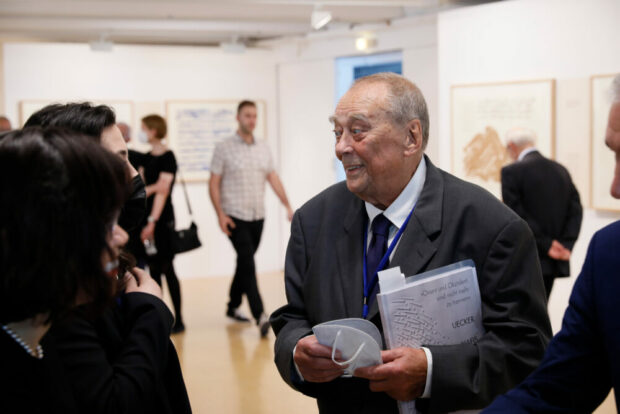

That the Iranian ambassador had invited him and international diplomats came to the UNESCO headquarters was exciting for Günther Uecker. The cosmopolitan artist feels deeply connected to Persian tradition and mysticism, as well as to the country and its people. More than just an exhibition, the opening of the Uecker show was a gathering. After all, the 92-year-old artist from Düsseldorf had made his way to Paris and, for the first time since the outbreak of the pandemic, left his self-chosen exile. He had also prepared some words. At the time of the invitation, he could not have foreseen the war in Ukraine or how Iran would position itself in this conflict.
In the morning in Paris, Uecker moves lightly through the exhibition hall, dressed in a bright linen suit and sneakers. In the evening, he will bow to the formality of diplomacy, wearing a dark suit and tie. The Hafis cycle will soon be hung up with the printing blocks. His son Jacob is accompanying him, along with a team from the Galerie Till Breckner, which helped organize and realize the exhibition.
The exhibition is on view until July 28.
UNESCO
The headquarters of UNESCO, founded in 1945, is located in Paris, from where international projects related to culture, education, and science are initiated and promoted. The remarkable Y-shaped building near the Eiffel Tower was designed by renowned architects in the late 1950s. Exhibitions and events are regularly held in the building. UNESCO also designates World Heritage Sites, currently listing 1,154 sites in 167 countries.
Founded in 1945, UNESCO was established with the hope that culture, science, and education would foster peace among nations. This is a belief shared by Günther Uecker. Throughout his travels, Uecker has engaged with people all over the world, communicating through art. Since 2016, the globally sought-after artist has been tirelessly showcasing his 42 prints inspired by Hafis’ verses. To him, the treasure of the Persian poet (1315–1390) represents the epitome of love and poetry. “Poetry connects people,” Uecker says.
Günther Uecker’s Tribute to Hafez
Exhibited 16 times, now in France for the first time.
But can poetry influence politics? The aggressive war in Ukraine has deeply affected the sensitive artist. “We are once again at war,” says the Mecklenburg-born Uecker, who as a boy had to protect his mother and sisters from the Russians by boarding up the doors and windows of their home on the Wustrow Peninsula. These events eventually led Uecker to discover the nail as a reinforced, expressive tool for painting, making him world-famous as the “nail artist.” Now, the trauma of his youth has reawakened, disturbing his mind. Subconsciously, the horrors of World War II are revived by the war in Ukraine. Uecker admits that he is gripped by fear, “the deepest form of fear.”
Perhaps he will speak to the ambassadors in the evening, he has said, though he wonders aloud: “Should I speak?” He rehearses what he wants to say: “More weapons mean the destruction of more lives. We should develop other activities that help those affected achieve their right to life.” The killing of people must be the central focus of all considerations, “stronger weapons kill more people.” Uecker calls for “a convention, an agreement among people who face each other with such hostility.” And finally: “I am not fighting against politicians, I’m simply saying this.” His pictures of Hafis’ verses are meant to speak quietly to the ambassadors, who in turn influence the people in their home countries. “I hope,” says Uecker, “that Hafis — not I — will touch them with his words full of joy for life and poetry.”
During the COVID pandemic, the nails caught up with Uecker again after decades. He created nine reliefs, along with drawings, all of which will be on display in New York starting in October. “It is a direct response to my inner state, to the danger that we were and are in because of COVID.” During the lockdown, Uecker didn’t go into the city or travel, staying only in the garden and the studio. He describes the nail reliefs as “brought-to-light sensations.” He called these new reliefs shields, thinking of the shield as a form of defense. He also speaks, in the context of the nails, of wounds, birthmarks, and stigmata: “During this epidemic, one is full of marks.”
The act of nailing occupied him throughout the pandemic. Then came the war, for which there is as yet no artistic response. However, his windows for the Schwerin Cathedral will soon be completed; he has drawn blue arcs of light for them.
This great variety comes together in his work: here the 42 Hafis pictures, there the new nail reliefs, and parallel to them, the cathedral windows. At 92, Uecker still enjoys an overwhelming creative drive. “The real work has yet to be done,” he says once again.
On the evening of the opening, he will speak about Hafis and the power of poetry, not about weapons.
The exhibition runs until July 28, 2022.
“Orient and Occident — Hafez through the Eyes of Günther Uecker”
Paris
Salle des pas perdus
7, Place de Fontenoy
75007 Paris
Opening hours
Monday – Friday, 9 a.m. to 5:30 p.m.
Article by Annette Bosetti in the Rheinische Post.
